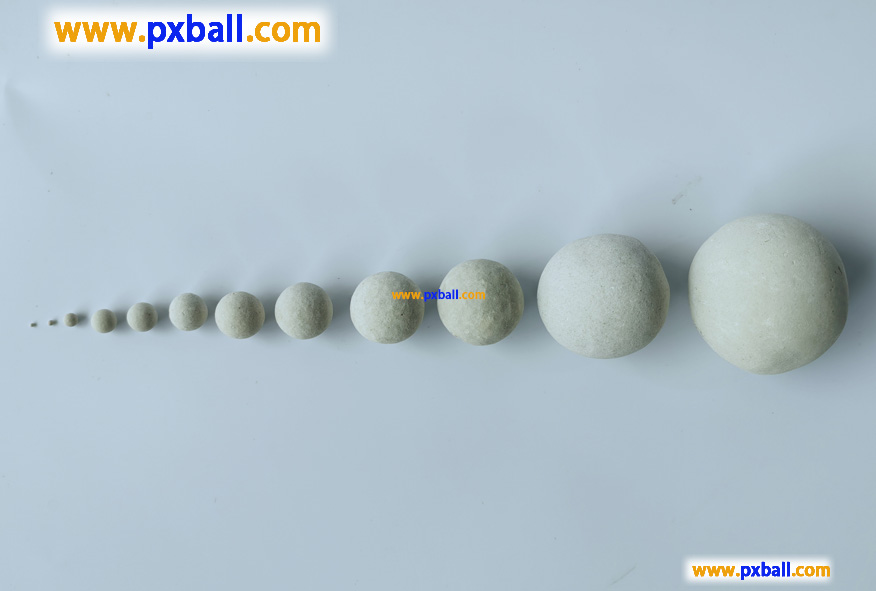
Inert alumina ball specifications from 3mm to 50mm, which is the size of conventional production, but as an alumina ball factory, the specifications can be customized according to customer requirements, small alumina ball specifications can reach within 1mm.
Alumina ball specifications:
Rolling ball specifications: φ1.0-2.0φ3mm, φ6mm, φ8mm, φ10mm, φ13mm, φ15mm, φ20mm, φ25mm, φ30mm, φ40mm, φ50mm can be customized to produce other specifications.
Press ball specifications:φ10, φ15, φ20, φ25, φ30, φ40, φ50, etc., can also be produced according to customer requirements of other specifications.
It should be noted that standard alumina porcelain balls : high dimensional accuracy, good sphericity, bright surface, especially high aluminum inert porcelain balls.
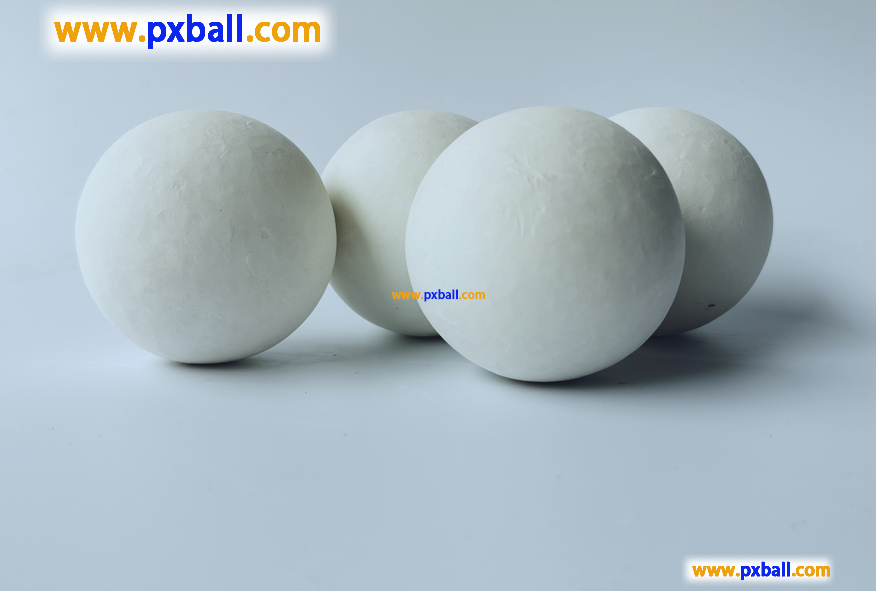
Different specifications of inert alumina ceramic ball application:
Small size (3mm-10mm)
Fine chemical and pharmaceutical fields: in the small reactor or microreactor, as the catalyst support and covering material, can effectively prevent the catalyst from being washed and poisoned by the reactants, to ensure the efficient reaction. For example, in the synthesis of drug intermediates, small size inert alumina ceramic balls can make the reaction material evenly distributed on the catalyst surface, improving the selectivity and yield of the reaction.
Laboratory research: Various small experimental devices commonly used in laboratories, such as fixed-bed reactors and flow-bed reactors, can help researchers better control reaction conditions and observe reaction processes. Its small size allows for laboratory-scale reaction systems to reduce retention and dead zones in the reactor.
Medium size (12mm-25mm)
Petrochemical hydrogenation unit: In the hydrorefining of distillate, hydrocracking, reforming pre-hydrogenation and benzene hydrogenation reactor, as the filler at the top of the catalyst bed, it can make the olefins in the secondary processing raw oil get preliminary hydrogenation, reduce catalyst coking and extend the service life of the catalyst. For example, in large petroleum refining hydrogenation units, medium sized inert alumina porcelain balls can form a stable covering layer above the catalyst bed, withstand the impact of the material and distribute the material evenly.
Chemical gas purification: used to absorb and separate harmful gases or impurities in the chemical production process, such as in the production of synthetic ammonia, can absorb carbon dioxide, hydrogen sulfide and other impurities in the raw gas, improve the purity of the gas, to ensure the smooth progress of the subsequent reaction.
Large size (30mm-50mm)
Large reactors and filters: in large chemical, petrochemical reactors and filters, it mainly plays the role of support and filtration, can withstand high pressure and flow rate, effectively filter out impurities in the fluid, and improve product quality. For example, in cracking furnaces for ethylene production, large inert alumina porcelain balls can be used as furnace fillers to support the catalyst and distribute the reaction gas evenly, while preventing catalyst particles from entering subsequent pipelines and equipment.
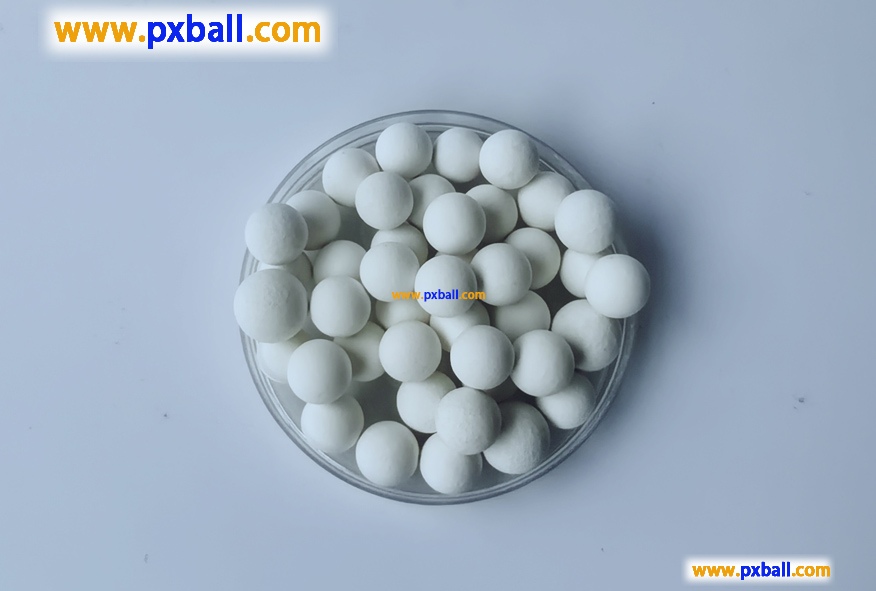
Select inert alumina ceramic ball specification factors:
Reactor size: Generally speaking, larger diameter reactors need to use larger specifications of inert alumina ceramic balls to ensure that they can be evenly distributed in the reactor and play a good support and coverage role to avoid the occurrence of local voids that are too large or too small. For example, in large petrochemical hydrogenation reactors, large porcelain balls of 30mm-60mm are usually selected.
Reactor pressure and flow rate: If the pressure in the reactor is high and the flow rate is large, the inert alumina ceramic ball specifications with high compressive strength and high density need to be selected to prevent the porcelain ball from being crushed or washed away during operation. For example, in some high-pressure, high-speed gas reactions, it may be necessary to use a larger diameter and higher strength porcelain ball.
Catalyst size: Usually the diameter of the inert alumina ceramic ball should be about 2 times the size of the catalyst, which can effectively prevent the catalyst particles from leaking out of the porcelain ball gap, while ensuring that the reactant and the catalyst are in full contact. For example, in fine chemical reactions using smaller particle catalysts, inert alumina porcelain balls of smaller size are selected accordingly.
Catalyst activity and stability: For the catalyst with high activity and poor stability, it is necessary to select the appropriate specification of inert alumina ceramic balls to provide good support and protection. The smaller size of the porcelain ball can be arranged more closely around the catalyst, reducing the wear and loss of the catalyst, and improving the service life of the catalyst.
Reaction material properties: If the viscosity of the reaction material is large and contains more solid particles or impurities, a larger size of inert alumina ceramic ball should be selected to prevent the porcelain ball pores from being blocked, affecting the flow and mass transfer of the reaction material. For example, in the hydrogenation reaction of heavy oil with high viscosity, large-size porcelain balls are more conducive to the passage of materials.
Reaction types and requirements: For reactions requiring high mass transfer efficiency, such as gas-liquid reactions, inert alumina ceramic balls with smaller specifications can be selected to increase the gas-liquid contact area and mass transfer efficiency; For some reactions that require less mass transfer but require greater support, such as fixed-bed catalytic reactions, larger porcelain balls can be used.
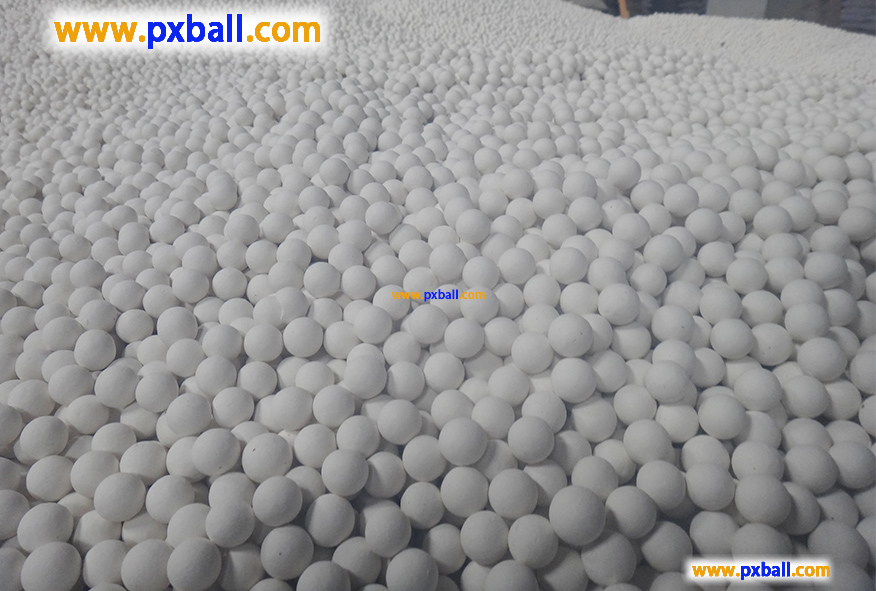
Catalyst Inert Ceramic Packing Process
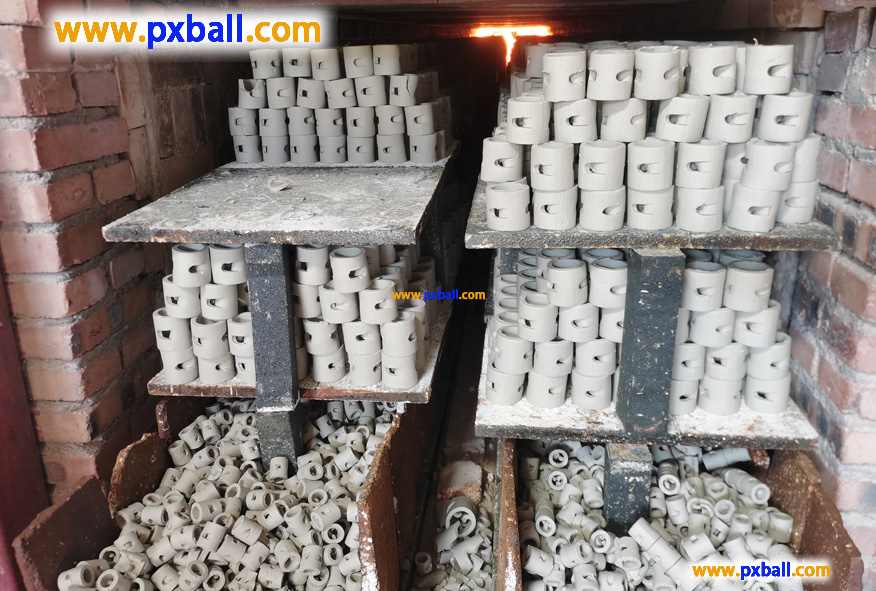
Is ceramic an inert waste?
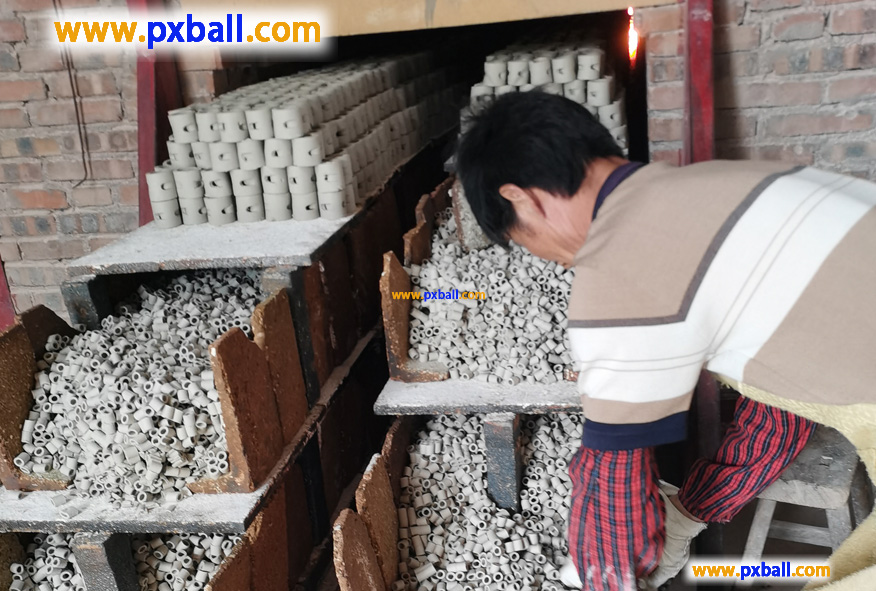
Are ceramics chemically inert?
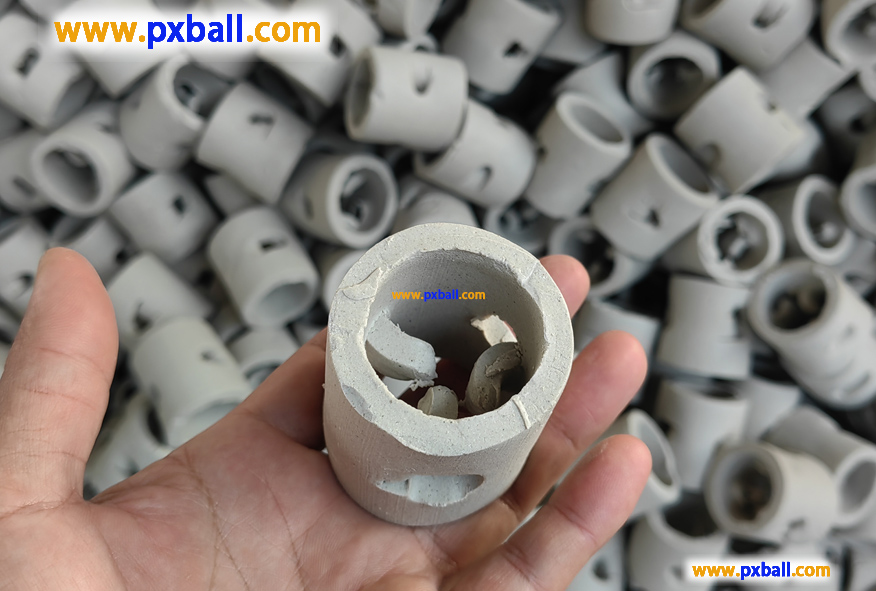
What is inert ceramics?
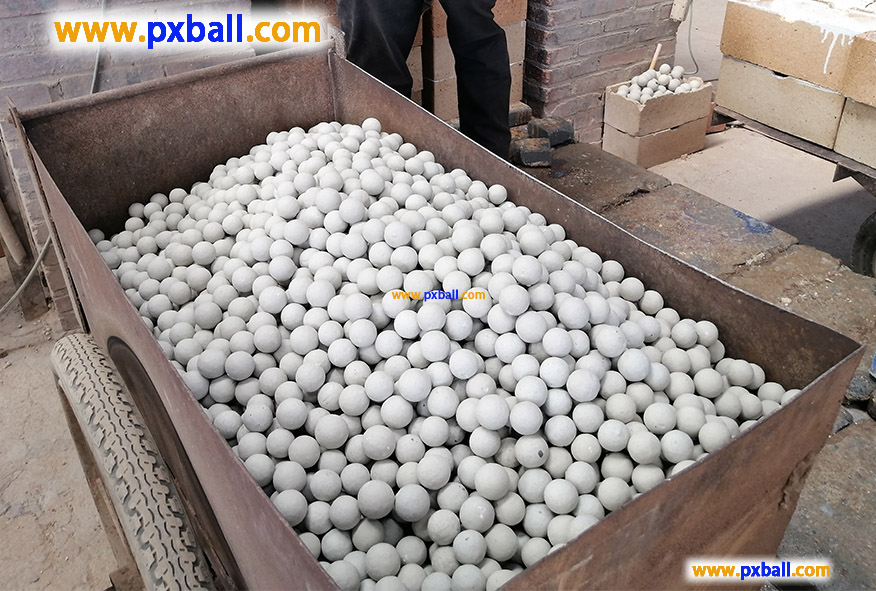
inert alumina ceramic ball density

Why do inert ceramic balls emphasize the level of aluminium content?
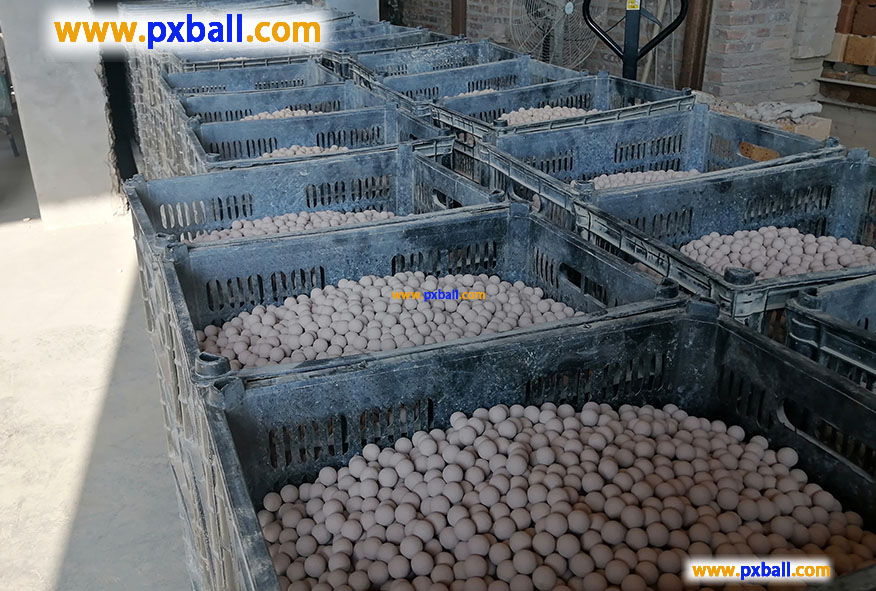
What are alumina ceramic balls used for?
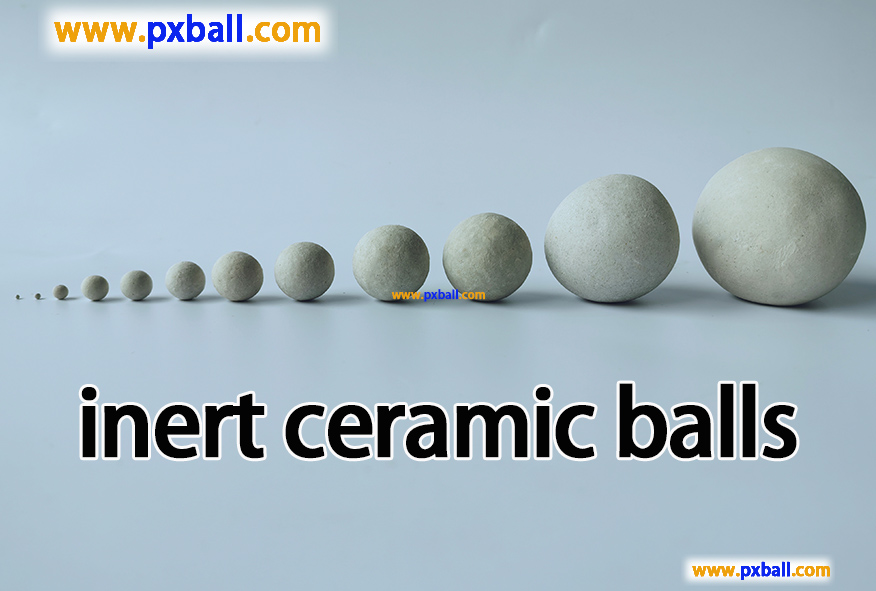
What is inert ceramic ball?